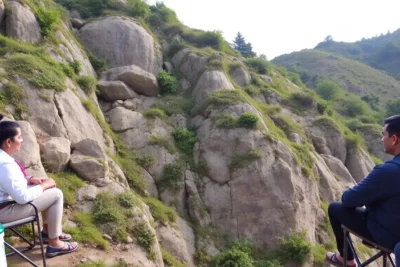
- Sagrada Familia: A Brief History of Gaudí's Masterpiece
- The Architectural Significance of the Sagrada Familia in Barcelona
- Exploring the Symbolism Behind the Sagrada Familia's Facades
- Visiting the Sagrada Familia: Tips for an Unforgettable Experience
- Uncovering the Secrets of Sagrada Familia's Interior Design
- The Ongoing Construction of the Sagrada Familia: A Historical Journey
The Sagrada Familia stands as an iconic symbol of Barcelona, captivating millions of visitors each year with its breathtaking architecture and intricate designs. This monumental basilica, designed by the visionary architect Antoni Gaudí, showcases a unique blend of Gothic and Art Nouveau styles that continue to inspire awe and admiration.
Regarded as an architectural masterpiece, the Sagrada Familia is more than just a church; it embodies the spirit of creativity and innovation that defines the city. As we delve into the details of **Sagrada Familia: A Spectacular Marvel in the Heart of Barcelona**, we uncover the rich history, artistic significance, and the ongoing journey towards its completion.
Sagrada Familia: A Brief History of Gaudí's Masterpiece
The Sagrada Familia was commissioned in 1882, with its construction led by architect Antoni Gaudí from 1883 until his untimely death in 1926. Gaudí's vision for the basilica was deeply rooted in his religious faith and passion for nature, which is reflected in its organic shapes and intricate details. Over the years, the project has seen various architects take over, each contributing to Gaudí's original dream while striving to stay true to his innovative style.
Originally designed as a traditional Gothic church, Gaudí transformed the plans to create a distinctive structure that incorporates elements of Art Nouveau and natural forms, resulting in a unique blend that defines the Sagrada Familia today. Some notable features of its design include:
- Twelve towers representing the apostles
- Three grand façades illustrating significant events in the life of Jesus
- Stained glass windows that bathe the interior in colorful light
The construction of the Sagrada Familia has faced numerous challenges, including the Civil War and the intricacies of Gaudí’s intricate designs. Despite these hurdles, progress has continued, fueled by donations and the devotion of both workers and visitors. Currently, the anticipated completion date is set for 2026, marking the centenary of Gaudí’s death, a milestone that underscores the enduring legacy of his work.
As the Sagrada Familia nears completion, it serves not only as a testament to Gaudí’s genius but also as an enduring symbol of Barcelona's cultural and architectural heritage. The basilica continues to draw millions of tourists each year, inspiring awe with its complexity and beauty, while its completion will stand as a modern marvel of engineering and artistry.
The Architectural Significance of the Sagrada Familia in Barcelona
The architectural significance of the Sagrada Familia lies in its groundbreaking design, which transcends traditional church architecture. By integrating elements of nature into its structure, Antoni Gaudí created a harmonious blend that reflects his deep religious beliefs. This basilica not only serves as a place of worship but also as a living testament to the idea that architecture can be an extension of the natural world, inspiring future generations of architects.
One of the most striking aspects of the Sagrada Familia is its use of geometry. Gaudí employed hyperboloids, paraboloids, and other complex shapes, allowing for innovative structural solutions that enhance both aesthetic appeal and stability. The remarkable combination of these shapes results in a dynamic form that catches the light in captivating ways, transforming the basilica as the sun moves across the sky.
Additionally, the Sagrada Familia is a showcase of symbolism. Each façade and tower is meticulously designed to convey religious narratives and natural motifs. For instance, the Nativity Façade celebrates the birth of Christ with sculptures depicting flora and fauna, further emphasizing Gaudí's belief in the interconnectedness of all creation. Key features include:
- The Passion Façade, illustrating the suffering of Christ
- The Glory Façade, representing the glory of the Resurrection
- The intricate play of light through the stained glass, enhancing spiritual experience
In summary, the architectural significance of the Sagrada Familia lies not only in its aesthetic wonder but also in its profound cultural impact. As a symbol of innovation and artistry, it challenges conventional notions of religious architecture and invites visitors to explore the deeper meanings embedded in its design. The ongoing construction reflects a commitment to these principles, ensuring that Gaudí's vision will continue to inspire awe for generations to come.
Exploring the Symbolism Behind the Sagrada Familia's Facades
The Sagrada Familia's façades are a profound reflection of Gaudí's artistic and spiritual vision, each telling a unique story through intricate symbolism. The Nativity Façade, for example, celebrates the birth of Jesus, adorned with vibrant sculptures of flora and fauna that represent the Creator's connection to nature. This façade encapsulates Gaudí's belief in the unity of creation, emphasizing the relationship between humanity and the natural world.
In contrast, the Passion Façade conveys the somber themes of sacrifice and redemption. It features stark, angular forms that evoke a sense of suffering, with figures that illustrate the final moments of Christ's life. The dramatic contrasts in this façade serve as a reminder of the trials faced in the journey of faith, deepening visitors' understanding of the spiritual narrative it embodies.
The Glory Façade, still under construction, is intended to depict the Resurrection and eternal life. With its ambitious design, it will showcase heavenly motifs and figures that capture the triumph of life over death. This façade aims to encapsulate the essence of Gaudí's vision for the Sagrada Familia, serving as a beacon of hope and renewal.
To further appreciate the symbolism behind the façades, here are some key elements:
- Nativity Façade: Flora and fauna symbolizing creation
- Passion Façade: Angular forms expressing suffering
- Glory Façade: Heavenly motifs representing resurrection
- Stained Glass: Colorful light enhancing spiritual experience
Visiting the Sagrada Familia: Tips for an Unforgettable Experience
When planning your visit to the Sagrada Familia, it's essential to consider timing to enhance your experience. Arriving early in the morning or later in the afternoon can help you avoid the peak crowd times, allowing for a more intimate exploration of this architectural wonder. Additionally, consider visiting on weekdays for a quieter experience compared to weekends or holidays.
Purchasing tickets in advance is highly recommended to bypass long queues. You can opt for a guided tour to gain deeper insights into the basilica's history and symbolism. Moreover, don't forget to download the official app, which provides an immersive audio guide that enhances your understanding of Gaudí's vision and the intricate details of the basilica.
As you explore the Sagrada Familia, take your time to appreciate the stunning interior. The interplay of light through the stained glass windows creates a mesmerizing effect, transforming the atmosphere within. Make sure to look up at the ceiling, where the organic shapes and patterns evoke a sense of being in a forest, a hallmark of Gaudí's nature-inspired design.
Lastly, allow yourself to wander around the surrounding area. The adjacent parks and streets offer beautiful views of the basilica from different angles, providing perfect photo opportunities. Remember to bring a camera and capture not only the magnificent structure but also the vibrant life of Barcelona that surrounds it.
Uncovering the Secrets of Sagrada Familia's Interior Design
The interior design of the Sagrada Familia is a breathtaking embodiment of Antoni Gaudí's creative genius, where every element is meticulously crafted to create a spiritual atmosphere. One of the most striking features is the tree-like columns that rise majestically, branching out to support the intricate vaults above. This organic design not only provides structural integrity but also enhances the feeling of being surrounded by nature, reminiscent of a forest canopy.
The play of light within the basilica is another captivating aspect of its interior. The stained glass windows flood the space with colorful light, transforming the interior into a vibrant tapestry that changes throughout the day. Each window's design tells a story and serves a purpose, creating a dynamic interplay between light and shadow that elevates the spiritual experience for visitors.
Furthermore, Gaudí's use of geometry in the interior is a testament to his innovative thinking. The combination of hyperboloids and other complex shapes allows for unique spatial experiences, providing a sense of movement and depth. As visitors walk through the nave, they encounter a harmonious blend of form and function that invites contemplation and reverence.
In summary, the secrets of Sagrada Familia's interior design lie in its thoughtful integration of nature, light, and geometry, all serving to deepen the emotional and spiritual impact on those who enter. Gaudí's vision is not merely to construct a building but to create an experience that resonates with the beauty of the natural world and the divine, making each visit a truly transformative journey.
The Ongoing Construction of the Sagrada Familia: A Historical Journey
The ongoing construction of the Sagrada Familia is a remarkable saga that reflects not only the vision of Antoni Gaudí but also the collective efforts of generations of architects and craftsmen. Since Gaudí took the reins in 1883, the project has transformed into a symbol of perseverance amid challenges, such as political upheavals and economic difficulties. The timeline of this monumental undertaking reveals a complex journey of dedication and innovation:
- 1882: Foundation stone laid
- 1926: Gaudí's death halts progress
- 2010: Gaudí's work declared a UNESCO World Heritage Site
- 2026: Expected completion date, marking a century since Gaudí's passing
As the construction carries on, it is fascinating to note how modern technology has played a pivotal role in realizing Gaudí's intricate designs. Advanced tools like 3D modeling and digital fabrication have enabled architects to interpret and execute the complex geometrical shapes envisioned by Gaudí. This blend of historical craftsmanship and contemporary techniques has allowed for a remarkable synergy that honors the past while embracing the future.
Moreover, the Sagrada Familia's funding primarily comes from visitor contributions, which underscores the global admiration for this architectural masterpiece. Each ticket sold not only supports the ongoing construction but also connects visitors to the rich tapestry of history, art, and spirituality that the Sagrada Familia embodies. Generating over €30 million annually, these funds are crucial for maintaining the pace of work and ensuring that the basilica continues to evolve into Gaudí's original vision.
In conclusion, the ongoing construction of the Sagrada Familia is more than a physical endeavor; it represents the resilience of human creativity and faith. As the basilica approaches its anticipated completion, it stands as a testament to both Gaudí's extraordinary talent and the enduring legacy of Barcelona's cultural identity. Visitors are not just witnessing a building but are part of a historical journey that will inspire future generations.
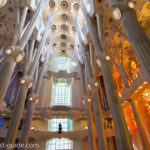 Discover the Distance: How Far is Sagrada Familia from Barcelona Cruise Port?
Discover the Distance: How Far is Sagrada Familia from Barcelona Cruise Port?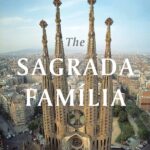 The Unfinished Masterpiece: Sagrada Familia Barcelona and Its Eternal Construction
The Unfinished Masterpiece: Sagrada Familia Barcelona and Its Eternal Construction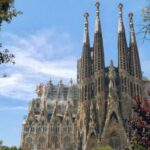 The Sagrada Familia: Is it Free to Visit?
The Sagrada Familia: Is it Free to Visit?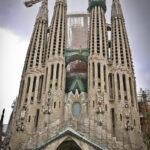 The Official Website of Sagrada Familia Barcelona: A Glimpse into Architectural Marvel
The Official Website of Sagrada Familia Barcelona: A Glimpse into Architectural Marvel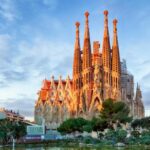 The Sagrada Familia: Barcelona's Remarkable Landmark – 7 Fascinating Facts
The Sagrada Familia: Barcelona's Remarkable Landmark – 7 Fascinating Facts The Marvelous Architecture: The Sagrada Familia in Barcelona Designed by Gaudí
The Marvelous Architecture: The Sagrada Familia in Barcelona Designed by GaudíIf you want to know other articles similar to Sagrada Familia: A Spectacular Marvel in the Heart of Barcelona you can visit the category Blog.
Deja una respuesta

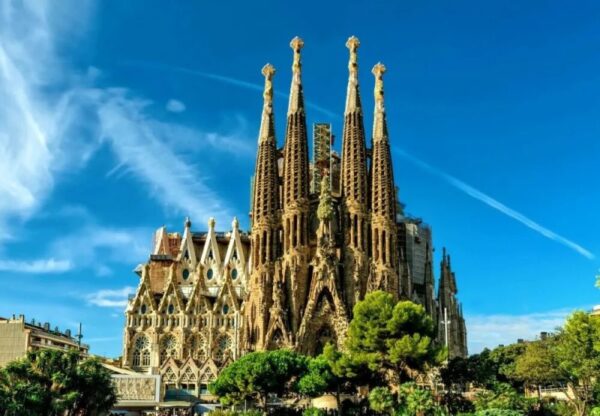
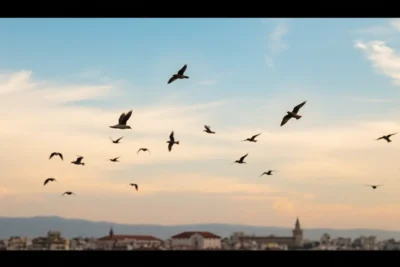



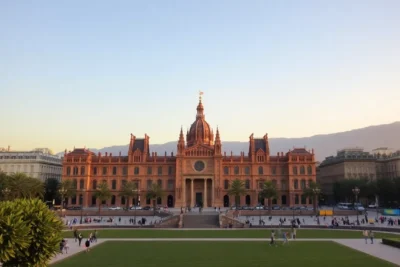

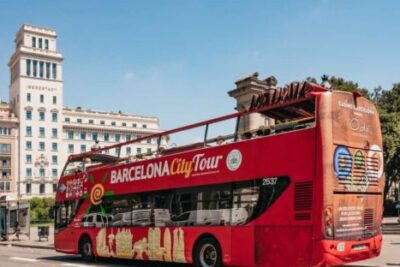
Read more!